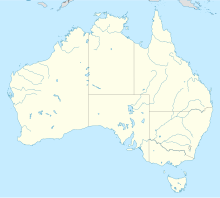Gorgon gas project

Location of some of the Greater Gorgon gas fields in relation to Barrow Island and the adjacent coastline
|
|
| Location | |
|---|---|
| Location | Barrow Island |
| State | Western Australia |
| Country | Australia |
| Coordinates | 20°47′S 115°25′E / 20.79°S 115.41°ECoordinates: 20°47′S 115°25′E / 20.79°S 115.41°E |
| Production | |
| Products | Liquid natural gas |
| Owner | |
| Company |
Chevron Corporation (47%) ExxonMobil (25%) Royal Dutch Shell (25%) Osaka Gas (1.25%) Tokyo Gas (1%) Chubu Electric Power (0.417%) |
| Website | Gorgon Official Site |
The Gorgon gas project is a natural gas project in Western Australia, involving the development of the Greater Gorgon gas fields, subsea gas-gathering infrastructure, and a liquefied natural gas (LNG) plant on Barrow Island. The project also includes a domestic gas component. It is currently under construction and once completed, will become Australia's fourth LNG export development.
'Greater Gorgon' refers to a grouping of several gas fields, including Gorgon, Chandon, Geryon, Orthrus, Maenad, Eurytion, Urania, Chrysaor, Dionysus, Jansz/Io, and West Tryal Rocks, situated in the Barrow sub-basin of the Carnarvon Basin) The Gorgon field is centered about 130 kilometres (81 mi) off the north-west coast of Western Australia, where the water depth is approximately 200 metres (660 ft). Other fields in the group lie to the north, such as Jansz-Io, which covers an area of 2,000 square kilometres (770 sq mi), in a water depth of 1,300 metres (4,300 ft).
Barrow Island lies off the Pilbara coast, 85 kilometres (53 mi) north-north-east of Onslow and 140 kilometres (90 mi) west of Karratha. The largest of a group of islands which include the Montebello and Lowendal Islands, it is 25 kilometres (16 mi) long and 10 kilometres (6.2 mi) wide, covering 235 square kilometres (91 sq mi).
More than 200 exploration wells have been drilled in the Barrow sub-basin over the past 35 years, including West Tryal Rocks in 1972, and Spar in 1976 - both discovered by West Australian Petroleum (WAPET) which had been a pioneering company in the development of the Western Australian petroleum industry. WAPET was the operator on behalf of various joint ventures comprising Chevron, Texaco, Shell and Ampolex (the exploration division of Ampol). Chevron and Texaco merged in 2001, Mobil took over Ampolex, and later merged with Exxon to form ExxonMobil. In 2000, Chevron became the operator of all WAPET's petroleum assets.
...
Wikipedia

